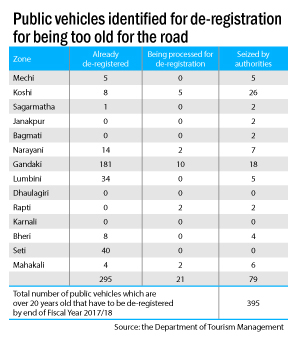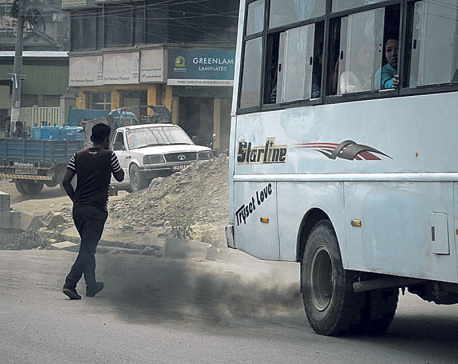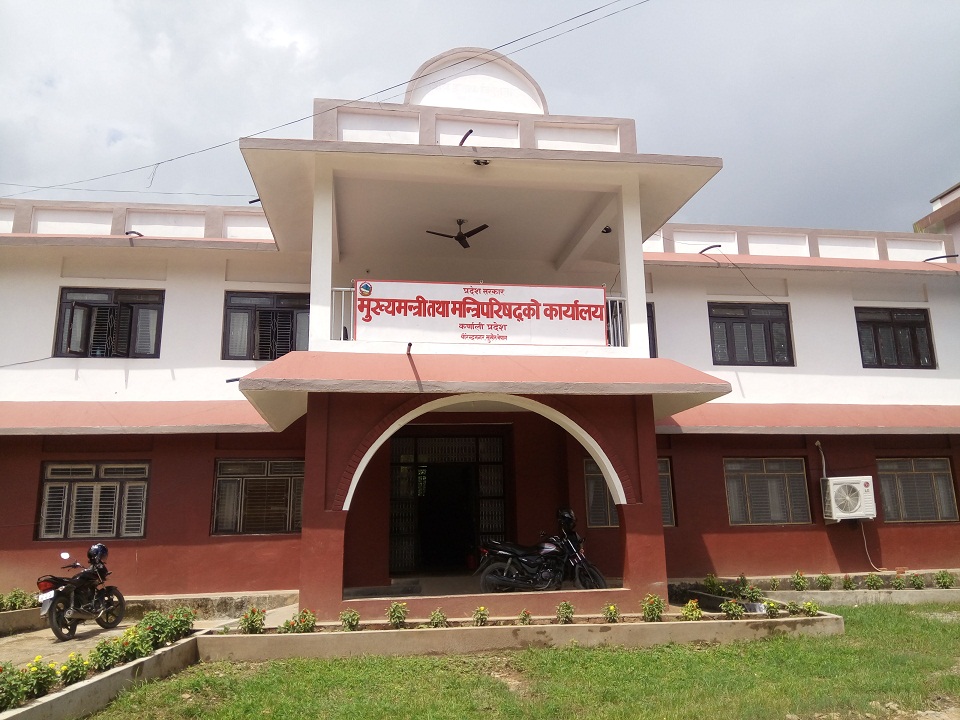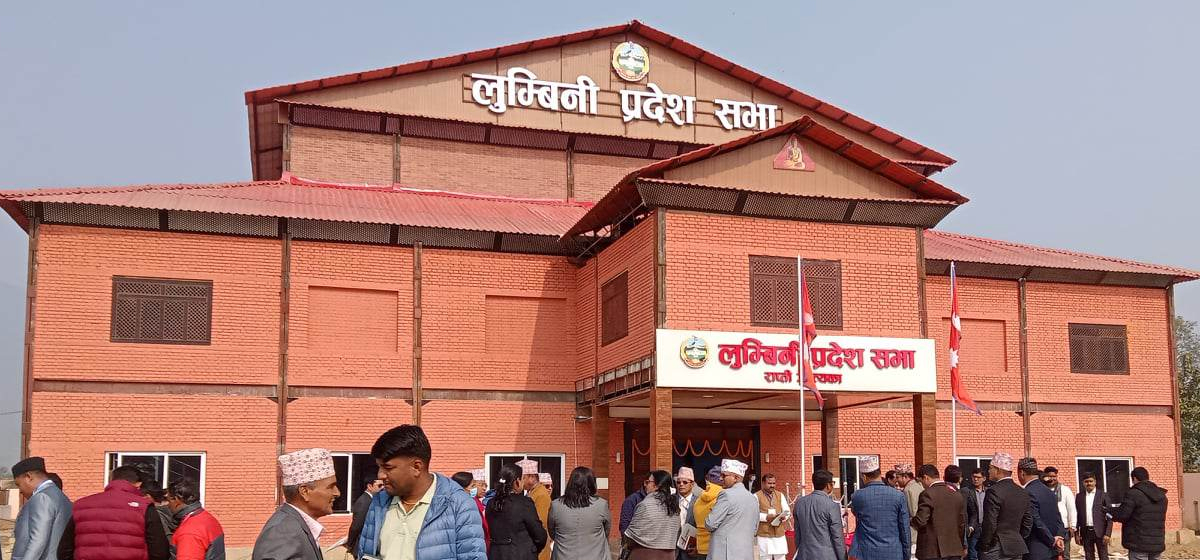
OR
End of the road for Valley's old public vehicles
Published On: March 1, 2017 01:00 AM NPT By: Ram Saran Tamang
Public transport vehicles older than 20 years banned in a bid to improve air quality and traffic chaos
KATHMANDU, Mar 1: In a move purportedly to mark the beginning of a new era in public transport here, the government has finally enforced a long-delayed policy of banning public transport vehicles older than 20 years from plying the roads of Kathmandu Valley from Wednesday onward. The move is certain to test the government's will power as transport entrepreneurs have said that such a move would be unreasonable. They have vowed to fight back if the government fails to meet certain terms and conditions before implementing the ban.
If the government's policy is implemented as now planned, some 2,500 vehicles currently plying inside the Valley will be displaced, according to the Department of Transport Management (DoTM).
However, due to lack of any integrated database, there is no exact data on the number of vehicles older than 20 years that are still operating, informed Tokraj Pandey, spokesperson for DoTM.
After rounds of discussions with various ministries and stakeholders, the government had published a notice exactly two years ago informing that public vehicles registered before 1997 would be banned from operating in the Valley from March 1, 2017. In the process, the government sidestepped the terms and conditions set out by the Federation of Nepalese National Transport Entrepreneurs (FNNTE).
FNNTE President Saroj Sitaula said they have demanded that the government provide a certain amount of compensation to the owners of old vehicles and allow very lenient tax waivers in vehicles imports – 95 percent tax waiver for tourist vehicles and 75 percent waiver for others. However, the government has refused to give in to their demands.
“Although this is a democratic country, the government is taking a very undemocratic step. They are displacing the public's assets without compensation and depriving many of their livelihood,” said Sitaula. “This is very unreasonable and reckless on the part of the government and it will not end well,” he added.Sitaula also issued a stern warning that they would retaliate though they did not have any immediate plans for this.
DoTM spokesperson Pandey said it is already clear that the government will not be meeting the demands on compensation, tax waiver and additional facilities. “Despite all the hurdles, there is no alternative to removing the vehicles. Such vehicles are responsible for numerous road mishaps and loss of life and property every year. It is the right of the public to be able to commute in safety,” he added.
“Neighboring India mandatorily scraps its vehicles after they complete 15 years, while Singapore scraps vehicles after 10 years of usage,” he further said.
The decision, which will also be enforced outside the Valley from March 2018, is partly an attempt to tackle Nepal's rapidly worsening air pollution that, according to the World Health Organization, kills about 10,000 people prematurely each year. DoTM has estimated the number of vehicles outside the Valley at around 3,000.
“Banning old vehicles will certainly help as they are one of the worst sources of air pollution, emitting microscopic particulate matter that have proven to be very hazardous to health,” said Dr Khem Karki, member secretary at National Health Research Center (NHRC). “However, our ultimate goal should be to reduce the number of vehicles altogether through the promotion of mass transit systems. A lot more still needs to be done in the war against air pollution.”
More importantly, the government should check the condition of vehicles, stressed Dr Karki. “If they are not maintained properly, vehicles that are just a few years old can emit more pollution than those older than 20 years. So, the government should bring in tough measures to check the condition of vehicles.”
You May Like This

Only 300 20-year-old public vehicles de-registered
KATHMANDU, May 15: Although over 5,000 public vehicles older than 20 years are plying the roads across the country according to... Read More...

Public vehicles older than 20 years to stay off the roads from Thursday
KATHMANDU, March 14: The government decision to put a ban on public vehicles older than 20 years is coming into effect... Read More...

Facebook to roll out 'end to end encryption' on Messenger
Social networking giant Facebook has announced rolling out of optional ‘end to end encryption’ for its Messenger application. ... Read More...



Just In
- Bhajang and Ilam by-elections: 69 polling stations classified as ‘highly sensitive’
- Karnali CM Kandel secures vote of confidence
- National Youth Scientists Conference to be organized in Surkhet
- Rautahat traders call for extended night market hours amid summer heat
- Resignation of JSP minister rejected in Lumbini province
- Russia warns NATO nuclear facilities in Poland could become military target
- 16th Five Year Plan: Govt unveils 40 goals for prosperity (with full list)
- SC hearing on fake Bhutanese refugees case involving ex-deputy PM Rayamajhi today















Leave A Comment